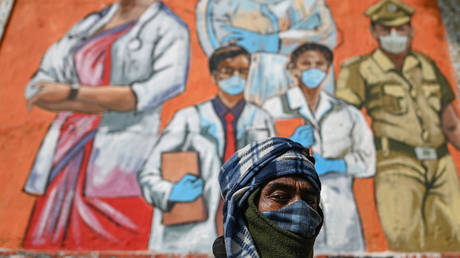
Amid rising Covid numbers, experts evaluate whether the country is ready for the challenge
As for 2022, Covid infection is not what we witnessed two years ago when the pandemic just started. The virus mutated, adapting to people’s immune defenses and vaccines. Now we have Omicron – a seemingly less virulent, but far more contagious variant.
India, a country with a very diverse population of 1.4 billion, has every reason to be concerned. The second Covid wave, which started in March 2021, was a dire challenge for the country. Experts called it a disaster, while media worldwide shared pictures of overwhelmed hospitals and people lining up for oxygen.
Second wave impact
Dr. Himanshu Shekhar, who works in the SCI International Hospital in New Delhi, recalls that time as a real shock. “The second wave was an eye-opener for all of us, for both young 35-year-old doctors of the new generation as well as senior doctors,” he told RT.
The case numbers overwhelmed the country’s healthcare system. Dr. Shekhar says the preparations seemed good enough, but there were too many people requiring medical help. “The number of people from Delhi and from the outside was so huge that our infrastructure could not cope with it,” he explains. “In the first 10 days everything was inadequate because we were just shocked.”
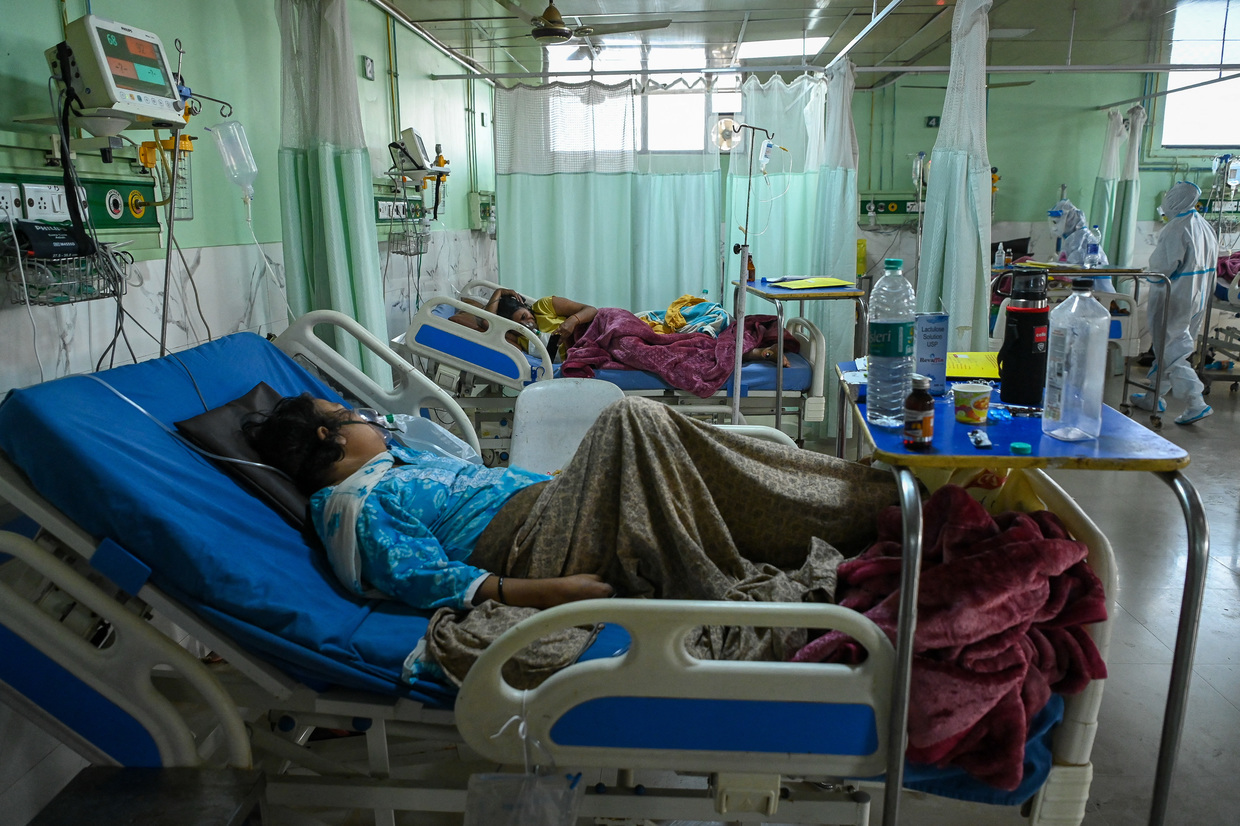
Hospitals were lacking beds and medicine; sometimes they couldn’t accept everyone. The country also suffered from an oxygen shortage. International media shared heartbreaking stories about doctors who had to choose who to treat, panicking relatives trying to find help, patients who had to stay at home as there were no spare beds for them. At the beginning of May 2021, the daily number of infections surpassed 400,000.
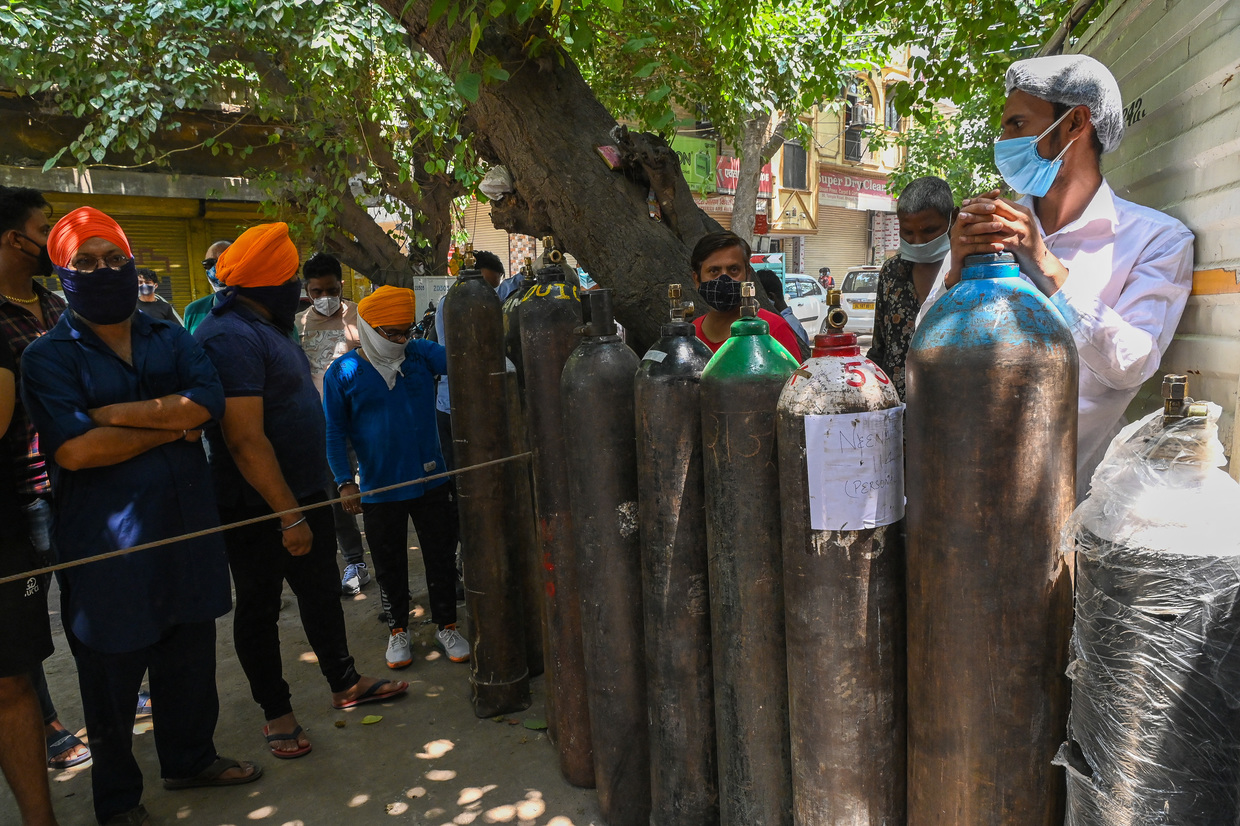
“Then there was a national mobilization, things improved, but it all gave us a very big lesson,” Dr. Shekhar says. “When the second wave settled down, the government ordered any hospital with more than 100 beds to set up an oxygen plant. The oxygen dependency came down.”
A group of researchers from India and Australia analyzed the factors that made the second Covid wave in India so devastating. Last year, they published their conclusions in The Lancet medical journal. According to their analysis, there were various double-mutant and triple-mutant strains of the SARS-CoV-2 virus circulating across the country. India’s population is dense, and people come into contact with each other a lot – conditions that the virus finds favorable to evolve, transform, and learn how to overcome immunity. One of the strains, the double-mutant B.1.617, known as Delta, pushed the surge in Covid cases not only in India, but all over the world.
The researchers also said the second Covid wave in India showed that not only old people, but everyone else, has the risk of a complicated infection. Each person’s body responds to the virus in its own way, and presumed strong immunity is not always a guarantee that the patient will survive. “A further observation in the peak of the second wave was the sudden decrease in the oxygen saturation of some patients, even when they were recovering well, giving less time for the proper ventilation support,” the study says.
Another factor that added to the severity of the second wave is the environmental situation in the country. One of the authors of the study, Dr. Sukhwinder Sohal from the School of Health Sciences at the University of Tasmania, told RT that environmental factors play a big role for highly-populated cities. “The air pollution, the high smoking rate – things of this kind are very important,” he said. “For patients with chronic diseases, or for smokers, a chance of getting the infection is higher, because the receptor which is used by the Covid virus is highly expressed in them.”
‘Vaccination like crazy’
According to Dr. Shekhar, the authorities adopted a lot of measures after the second wave. “The vaccination program went, you know, like crazy – 10 million people vaccinated in one day, education boosted for people to take the vaccine… All these measures are showing results.”
For now, half of the Indian population is fully vaccinated against Covid. At the beginning of January, people in the age group 15-18 became eligible for immunization. According to the Health Ministry, as of January 18, over half of them received the first dose. Now the country plans to start vaccinating children aged 12-14 in March.
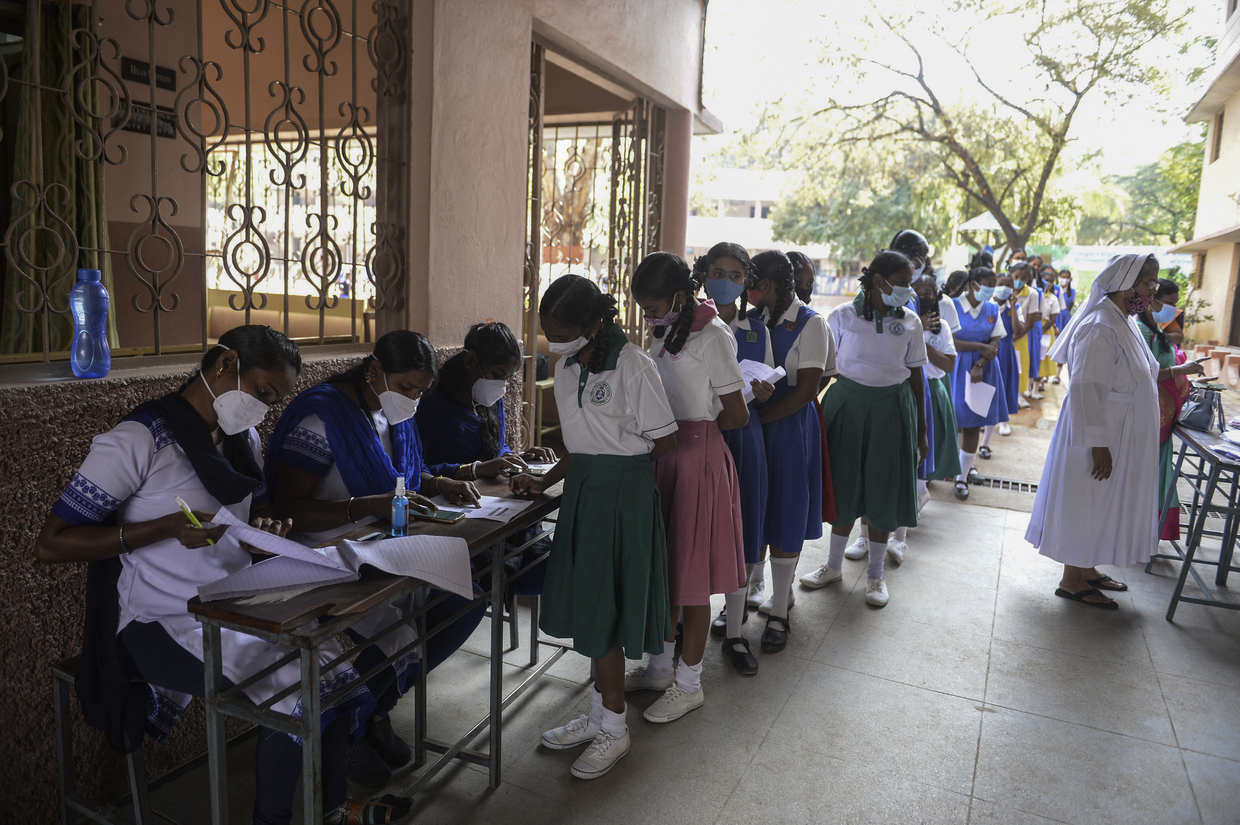
Was it difficult to achieve these results? Dr. Shekhar says that when you have such a big and diverse country, you cannot avoid certain obstacles. “We faced vaccine hesitancy in January 2021, when the vaccination started in India. There were some myths spreading, so we had to counter them. We started a lot of massive programs, and a lot of eminent personalities joined them, especially after the second wave,” he told RT.
“Many Bollywood personalities like Amitabh Bachchan and other actors who have a massive fan-following, our sport persons – they all went into it, they were showing people that they took the vaccine. So this turned the tide.”
Amitabh Bachchan, a 79-year-old Indian cinema legend, shared the news of his vaccination on Twitter, where he is followed by 47 million people, and on Instagram, where he has almost 30 million followers.
There’s no doubt that India’s rich cinematic tradition means a lot to people. Even the Health Ministry celebrated the 1-billion-vaccine milestone with a song and a movie.
As for Dr. Sohal, he says he is not aware of any vaccine hesitancy now. “I think people are very keen to get vaccinated.”
Omicron alert
Despite the global efforts to tackle the pandemic, last autumn, a new strain appeared – Omicron – this time from South Africa. It’s highly contagious but causes milder symptoms, and it can infect even vaccinated people… and it put the world on high alert again as infections skyrocketed.
According to Dr. Sohal, the numbers we have now may not be accurate. “The main question is how much testing has been taken. Because some people who get sick just don’t report their symptoms. For example, they already got one or two doses of the vaccines, so when they suffer any symptoms, they just don’t report them. In three or four days they are already out of it. This factor has to be taken into account. The problem is not in the quality, because testing can be quite good, but it’s about the numbers.”
Omicron has caused some countries to tighten their Covid regulations, amid fears that the healthcare systems will not be able to cope with the pressure.
However, Dr. Shekhar believes the situation is not as bad as some expected. “The positivity rate till 31 December in India was almost negligible. But with this new Omicron strain, in the first week of January the positivity rate started rising,” he said. “But the good thing is that about 80% of the Covid hospitals are empty. A lot of people testing positive are asymptomatic, many prefer to just stay home in isolation for some five days. India is a big country with a very big population, so the numbers might look big, but if you ask me as a doctor, I don’t feel any pressure.”
‘Superspreader’ risk
One common concern for all countries during the pandemic has been mass gatherings. Regarding India, with its population of 1.4 billion, it’s easy to imagine how massive gatherings can be. In 2021, during the second wave, thousands of worshippers took part in Kumbh Mela – an important Hindu religious festival.
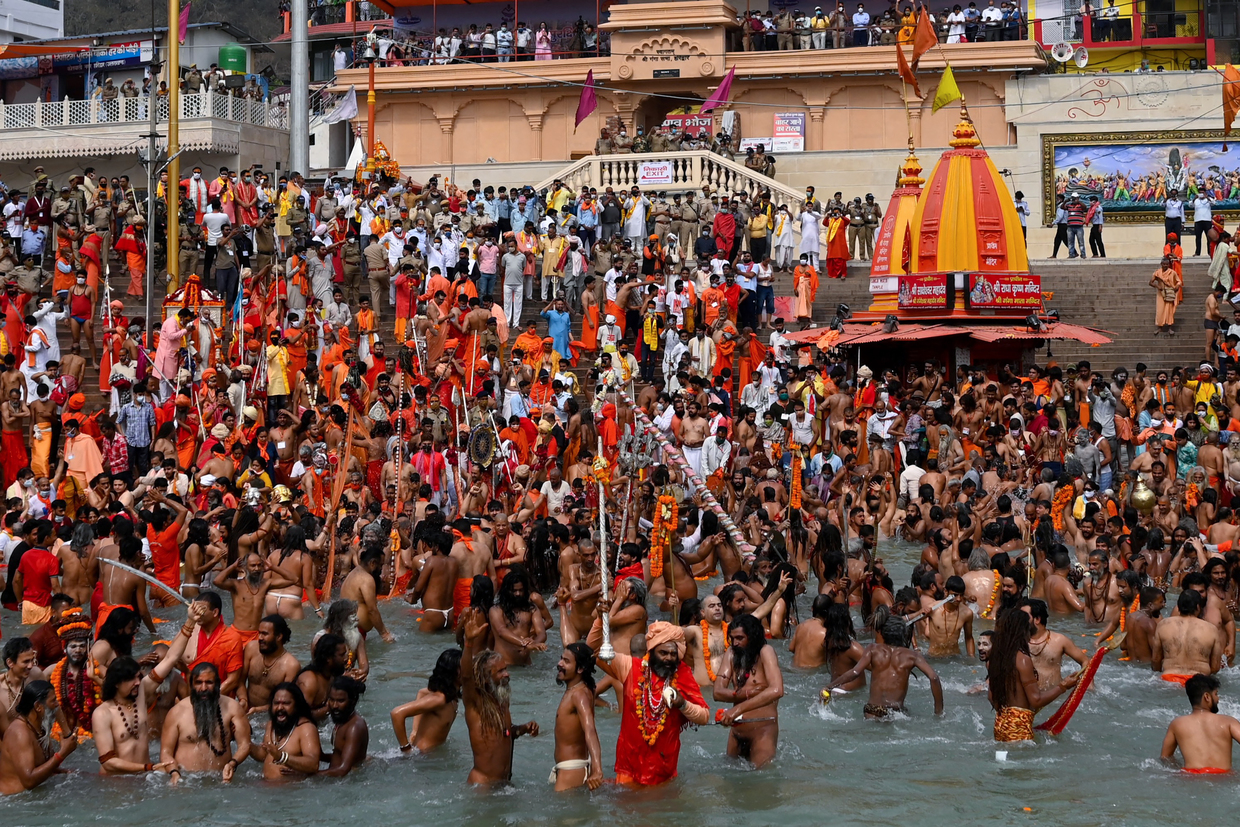
Despite the fact that the authorities imposed Covid restrictions during the celebration, one look at the footage from the ceremonies is all it takes to see that in crowds such as this, you can’t test everyone and prevent the virus from spreading.
International media raised ‘superspreader’ fears over the festival. Its role in increasing infections across the country was later proven by research.
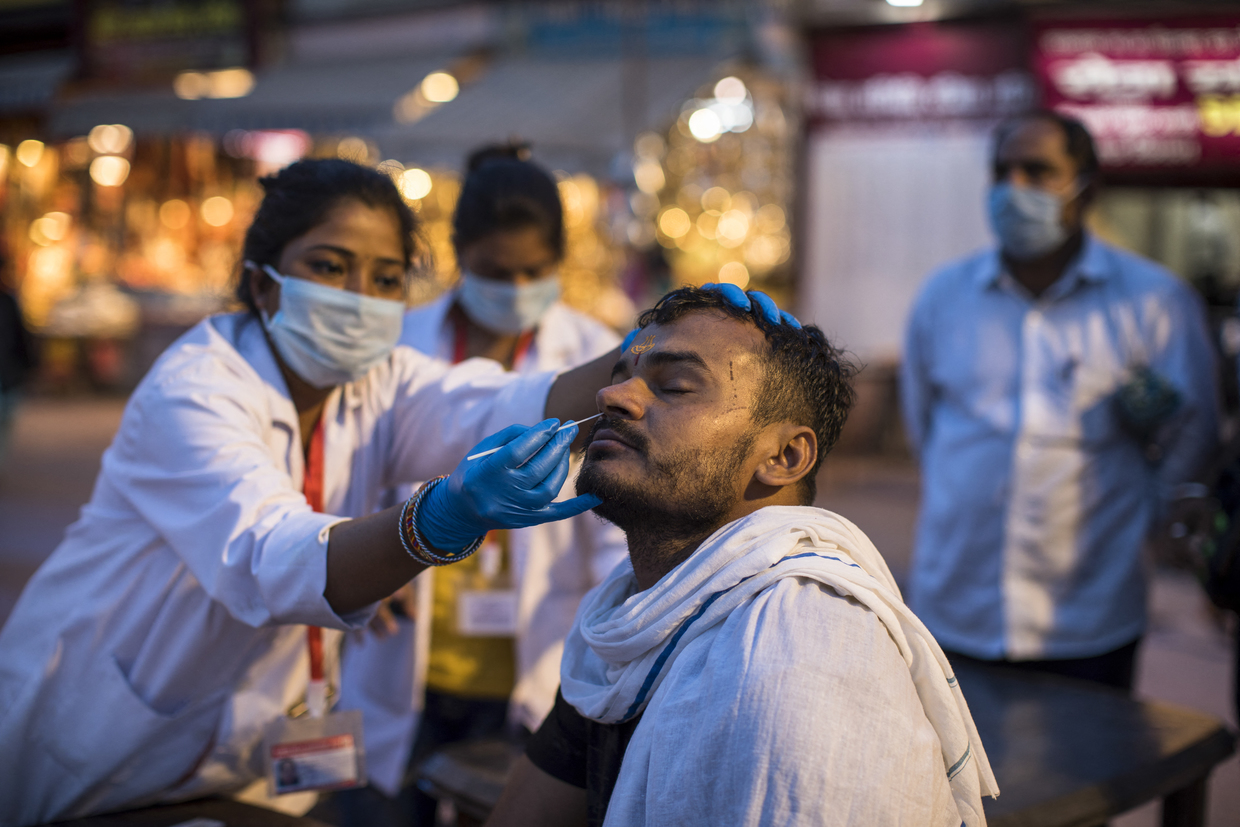
This year, however, despite the third wave, religious ceremonies are still being celebrated. At the beginning of January, hundreds of thousands gathered in western India for the Gangasagar Mela festival. The authorities again set up certain restrictions… But can you ever be sure everyone is observing them in a large crowd?
“Doctors and scientists, we all called our government to stop such superspreader events,” Dr. Shekhar said. “I think they are taking precautionary measures, but if you ask me, they shouldn’t be allowed.”

However, not all gatherings are allowed. Next month, five states, including the most populous, Uttar Pradesh, will vote in the assembly election. For now, physical rallies are banned, and the parties have turned to virtual campaigning.
“The main problem here is when you have 1.4 billion people, you have to take a lot of points of view into consideration, you can’t just dictate, here it would not work,” Dr. Shekhar said. “If you go slowly, explaining, convincing, then you get their consent and you can go forward. India is very diverse, so you have to control it all tactfully.”




